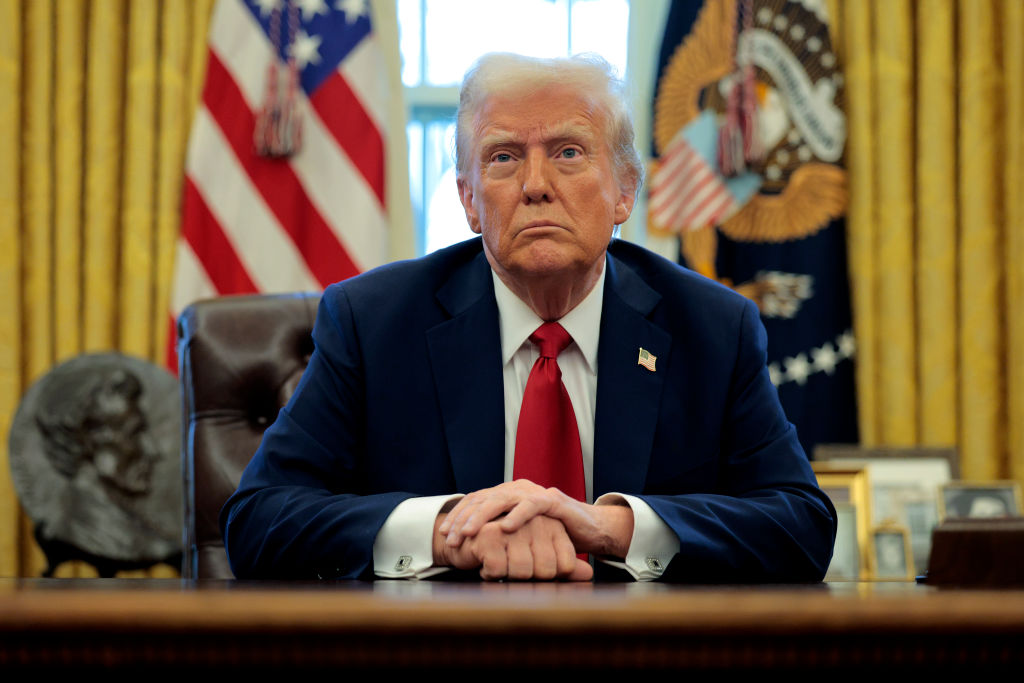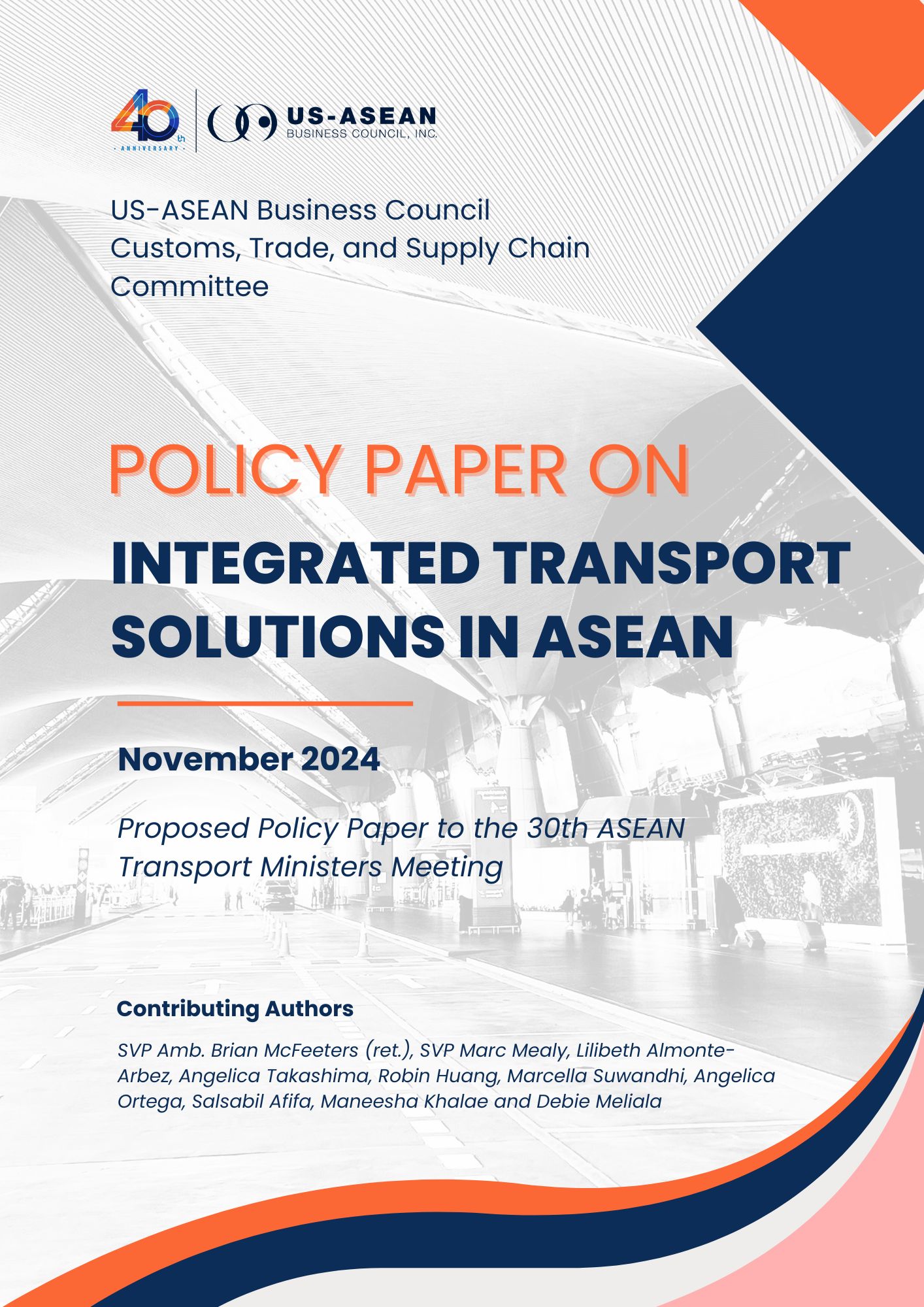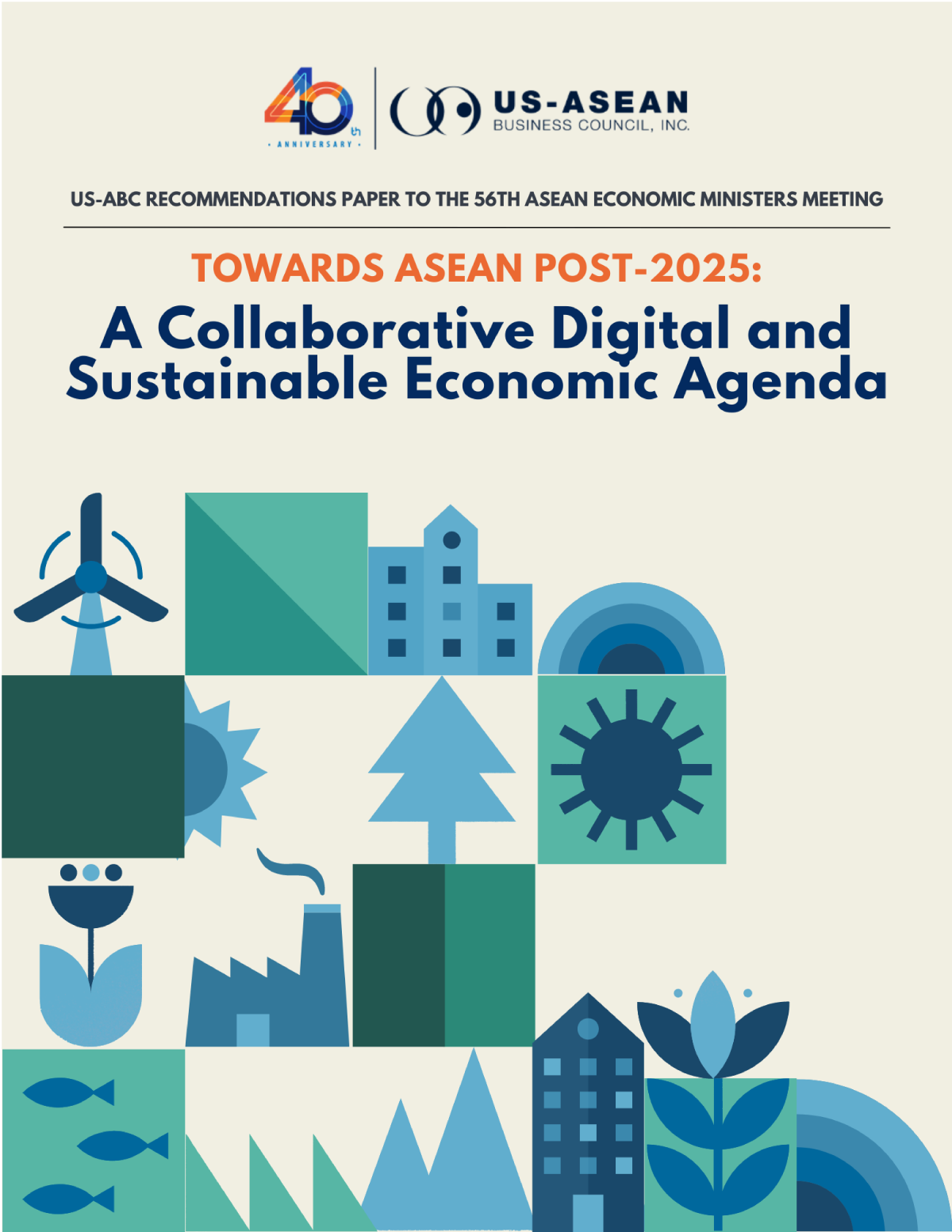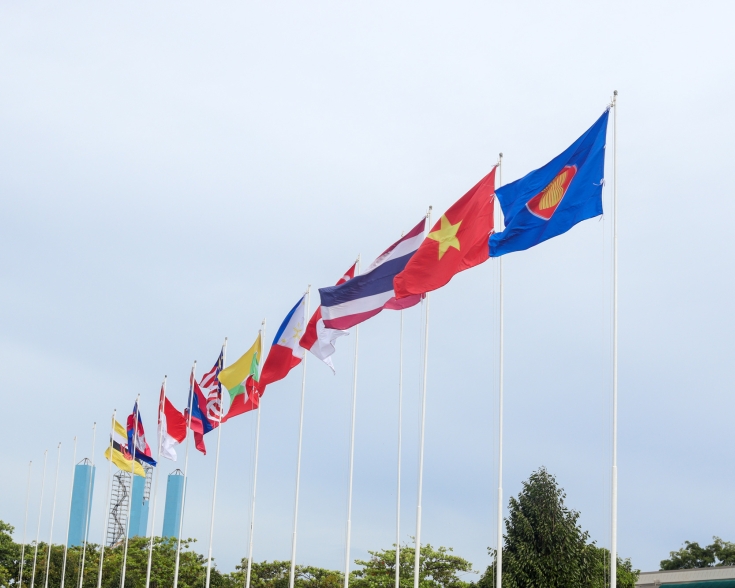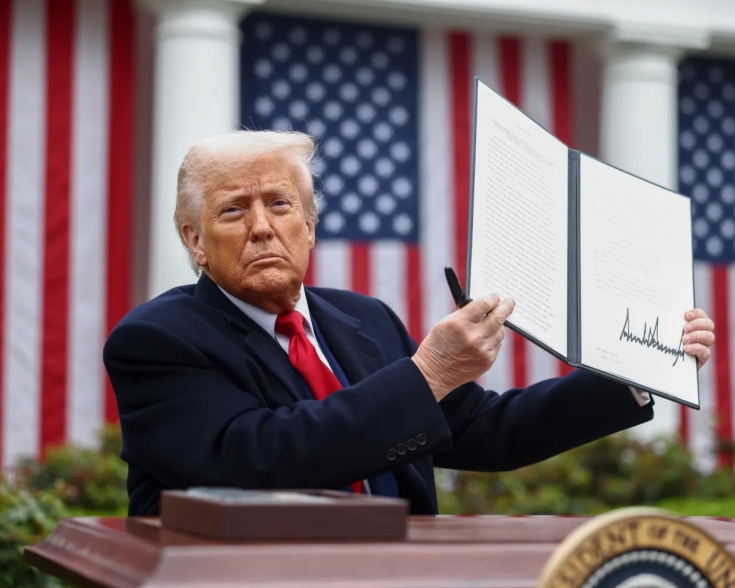What does America First Trade Policy mean for the United States and Southeast Asia
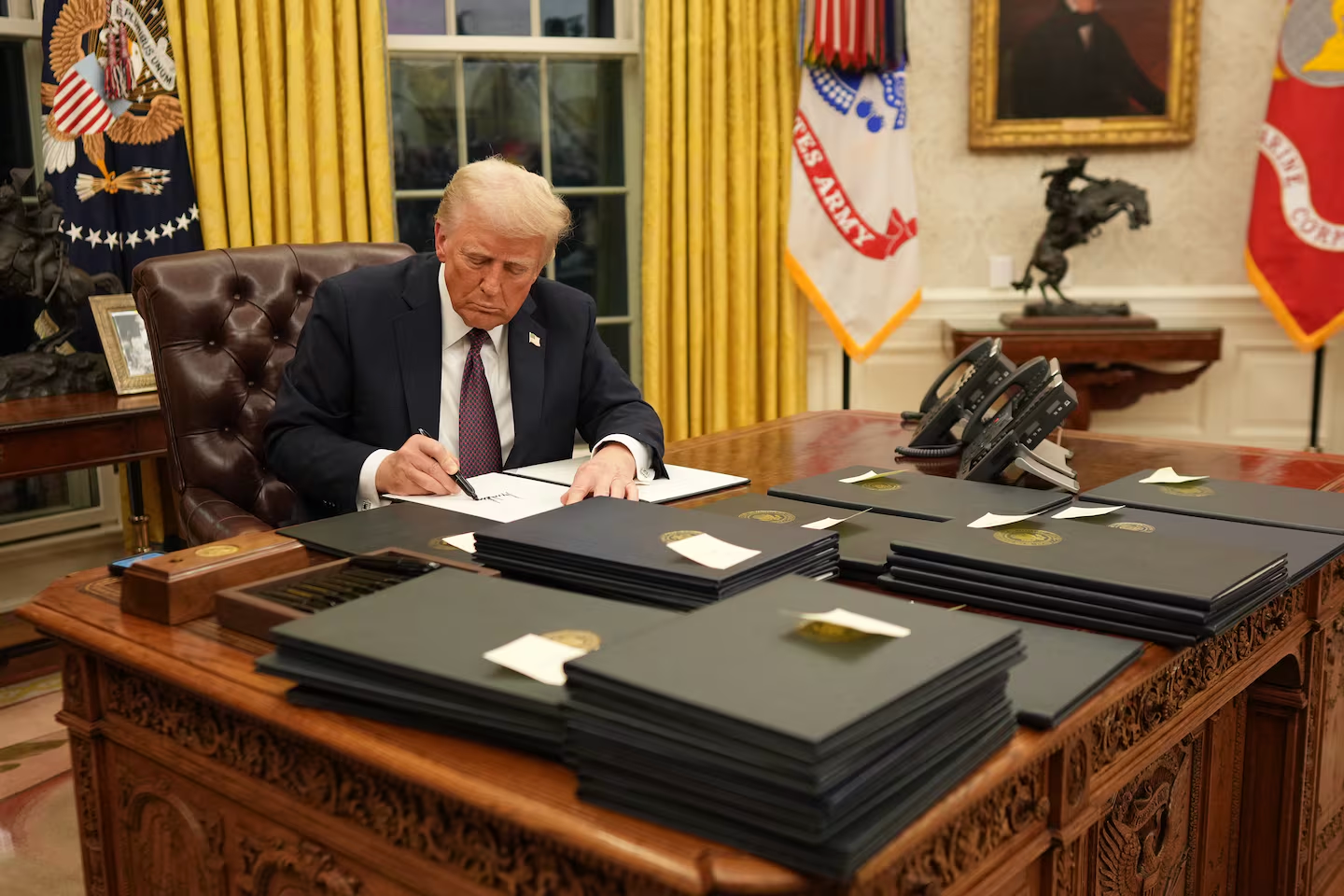
America First
On January 20th his first day in office, U.S. President Trump issued the America First Trade Policy Memorandum instructing yet to be confirmed members of his Cabinet to address unfair and unbalanced trade. He directed the Commerce Secretary, in consultation with Treasury Secretary and the United States Trade Representative (USTR), to investigate large and persistent annual trade deficits in goods and recommend appropriate measures such as global supplemental tariffs to remedy such deficits. It also required the submission of a unified report on the trade deficits investigation by April 1. The Memorandum did not mention trade in services, which is not subject to tariffs and where the United States often enjoys a trade surplus with bilateral partners.
By February 1st, President Trump issued three executive order imposing tariffs on Canada, Mexico, and China using the International Emergency Economic Powers Act (IEEPA). His action sent markets into volatility before a reprieve came 72 hours later when the administration announced that it was suspending the proposed tariffs on Mexico and Canada as deals were announced with both governments to enforce stricter border security and address fentanyl trafficking. This affirmed his negotiating strategy and preference for the threat and use of tariffs as a policy instrument to address non-trade related issues.
The executive orders regarding China included increasing imports tariffs on Chinese products by 10 percent. They also suspended de minimis entry, subjecting shipments below US$800 to tariffs and to more costly entry filing processes. His action sent markets into volatility before reprieve came after February 3rd agreements with Mexico and Canada to enforce stricter border security and address fentanyl trafficking. He continues to threaten the EU with tariffs although it is unclear what emergency justification he could use under IEEPA against the European Union. On February 10, he restored Section 232 tariffs removing country exceptions and quota deals and imposed 25% tariffs on steel and aluminum by presidential proclamation.
The first Trump administration extensively used Congressional delegated authority to increase tariffs resulting in the doubling of duties paid on U.S. imports from FY2015 to FY2020 from approximately US$37 billion to US$74 billion. The Biden Administration maintained many of these policies with CBP (U.S. Customs and Border Protection) collecting US$77 billion in FY2024. A timeline of the 2018-2019 U.S. tariffs on steel and aluminum (Section 232), Chinese products (Section 301), solar panels and washing machines (Section 201) is available here. Biden granted temporary solar panel tariff waivers and exempted four Southeast Asia countries for 2 years but later on investigated Cambodia, Malaysia, Vietnam, and Thailand.
Impact on the United States, Asia, and the Global Economy
China’s retaliation to hurt Trump-voting counties and U.S. automakers
The 10% U.S. tariff on all China imports remain. President Trump is in no hurry to speak with Chinese Premier Xi Jinping. He has been stewing over the 2020 Phase One Deal and how, in his mind, there was a lack of enforcement during the Biden administration and China has not bought enough agricultural products from the United States. He acknowledged that we would be some pain, stating that “We may have in the short term, a little pain, and people understand that. But long term, the United States has been ripped off by virtually every country in the world.”
According to Brookings, China’s retaliatory tariffs will hurt Trump-voting counties most and will affect industries that account for about 400,000-700,000 jobs in the United States. China’s 15% tariff on coal and liquefied natural gas products may have limited impact since the U.S. exports only 2.3% of its total natural gas exports to China. However, China’s 10% tariff on crude oil, agricultural machinery and large-engine cars imported from the U.S. might be “painful for GM, which is adding the Chevrolet Tahoe and GMC Yukon to its China line-up, and for Ford, which exports the Mustang and F-150 Raptor pickup.”
China’s retaliation goes beyond tariffs and imposes export controls on five (5) critical metals: tungsten, tellurium, bismuth, molybdenum and indium. These metals are used for solar panels, artillery shells, and missile parts. The required licenses to export these critical minerals are a recent expansion of their December 2024 export control measures. China is also investigating Google on suspicion of violating antitrust laws and placed two American companies on an unreliable entities list: PVH Group, which owns Calvin Klein and Tommy Hilfiger, and Illumina, which is a biotechnology company with offices in China. The listing could bar them from engaging in China-related import or export activities and from making new investments in the country.
Growth Drag
Analysts predicted that the 25% tariffs on Mexico and 25% tariffs (only 10% on oil, natural gas, and electricity) on Canada won't be in place for an extended period of time as exemptions will be made to the U.S.' two most important trading partners. However, tariffs will still shave 0.7 percentage points off U.S. GDP growth this year, and while a recession will be avoided in the U.S., Canada and Mexico will be hit even harder according to Ryan Sweet, chief U.S. economist at Oxford Economics. Mr. Trump’s tariffs would amount to an average tax increase of US$830 (S$1,140) per household, according to the Tax Foundation.
Morgan Stanley’s Chief Asia Economist Chetan Ayha furthermore warned that Asia faces a growth drag that could be a repeat of 2018-19 or worse as the trade war emerges. Uncertainty could further deal a blow to corporate confidence and tighten budgets, impacting job creation and consumption.
From Washington apples to Louisiana rice
The 30-day pause makes trade highly unpredictable between the U.S. and its biggest trading partners Canada and Mexico. During the February 6 confirmation hearing of President Trump’s USTR nominee Jamieson Greer, Senator Ron Wyden (Oregon-D) stated that President Trump’s “tariff bluff created huge uncertainty that is costing American businesses and putting the global economy on a month-to-month lease.” Senator Catherine Cortez Masto (Nevada-D) also highlighted the practical impact of Trump’s unpredictable tariff policy when a small business (SME) called up her office amidst concerns of business disruption and loss of income after a Canadian customer canceled a contract order in view of the uncertainty. Senator Bill Cassidy (Louisiana-R) questioned Greer on his stance on the World Trade Organization (WTO) Dispute Settlement Mechanism, why toss out a tool that awarded a favorable decision for Louisiana rice farmers. Withdrawing from the WTO would make enforcement against subsidies even harder.
Senator Maria Cantwell (Washington-D) also pushed the nominee to be empowered to open up markets not just sit on tariffs, doubting the wisdom of tariffs against Canada and Mexico which represent 30% market for Washington apples while countries like India have much higher tariffs on apples. Senator Todd Young (Indiana-R) raised the importance of digital trade, flagged discrimination of U.S. companies in the Republic of Korea, and the possibility of a sector-specific Trade Promotion Authority. The sentiment for more market access and less non-tariff barriers was shared across the aisle as many senators demanded the USTR to negotiate and open new markets for U.S. products, and to report and consult with Congress on the administration’s trade policy. It is unlikely that a Republican-controlled House and Senate will be able to put guardrails on the U.S. Congress delegated tariff-setting authority to the President.
Southeast Asia’s gambit
Southeast Asia will face greater scrutiny under the second Trump administration. Deficits in trade in goods were recorded in 2024, in billions of dollars, with Vietnam ($123.5), Thailand ($45.6), Malaysia ($24.8), and Indonesia ($17.9) who rank in the top 20 countries with large deficits with the United States. Vietnam had been singled out during Greer’s confirmation hearing.
Proactive reduction of trade deficit
In an effort to evade President Trump’s tariff hit list and pave the way for a win-win solution, countries like Thailand are proactively reducing its trade deficit with the United States. The petrochemical industry in Thailand will buy more U.S. ethanol. Furthermore, Southeast Asia countries learned from 2018-2019 and expanded their bilateral FTA network and the ASEAN region is now negotiating a regional Digital Economy Framework Agreement. Thus far, reactions to Trump 2.0 tariffs have been cautious with governments and companies openly seeking new markets and reducing dependence on major economies like China and the United States.
Diversification not so fast and more complicated
Chinese investments drove manufacturing diversification in Southeast Asia during the Trump 1.0 administration. It won’t be easy this time around. Given the upcoming USMCA 2.0 review and possible changes to the Rules of Origin to ensure “China-free” supply chains in critical sectors, manufacturing for export to the U.S. market may mean more costly compliance and more complicated diversification for Southeast Asia, where supply chains are closely integrated with China supply chains. The Hinrich Foundation Head of Trade Policy Dr. Deborah Elms said if there were Chinese content or raw materials in products made in a third country, they might now be subjected to tariffs. A Trump 2.0 might reject China+1 diversification and threaten Southeast Asia’s role as intermediary between the United States and China. Dr. Jayant Menon, a senior fellow at Singapore think tank the ISEAS Yusof Ishak Institute, thinks that President Trump is likely to continue the trend that started with the recent measures announced by former president Joe Biden, which targets ownership and nationality rather than location of firms.
It is therefore crucial for U.S. firms operating in Southeast Asia to highlight the American nature of their goods and services which translate into jobs creation and investment in the United States. For example, supporting the U.S.-ASEAN Business Council’s ASEAN Matters for America Matters for ASEAN. Almost 42,000 companies across the United States export to ASEAN. These goods and services exports, directly or indirectly, close to 600,000 jobs in the United States.
A rocky road ahead
U.S. tariffs on Chinese products and the specter of more tariffs on ASEAN trading partners like the EU will test ASEAN centrality and provide more impetus for regional economic integration while continuing to reshape global supply chains in critical sectors, possibly in broader sectors.
However, the United States and Southeast Asia governments tend to engage on strategic issues more on a bilateral basis despite elevating U.S.-ASEAN relations into a comprehensive strategic partnership. The America First Memorandum has left the door open for trade deals (Section 2.g) and instructed the USTR “to identify countries with which the United States can negotiate agreements on a bilateral or sector-specific basis to obtain export market access for American workers, farmers, ranchers, service providers, and other businesses and shall make recommendations regarding such potential agreements.” It would benefit Southeast Asia and sectors crucial for U.S. companies to give very specific ideas to the new USTR and keep the dialogue open and have a measure of predictability in the coming days.

